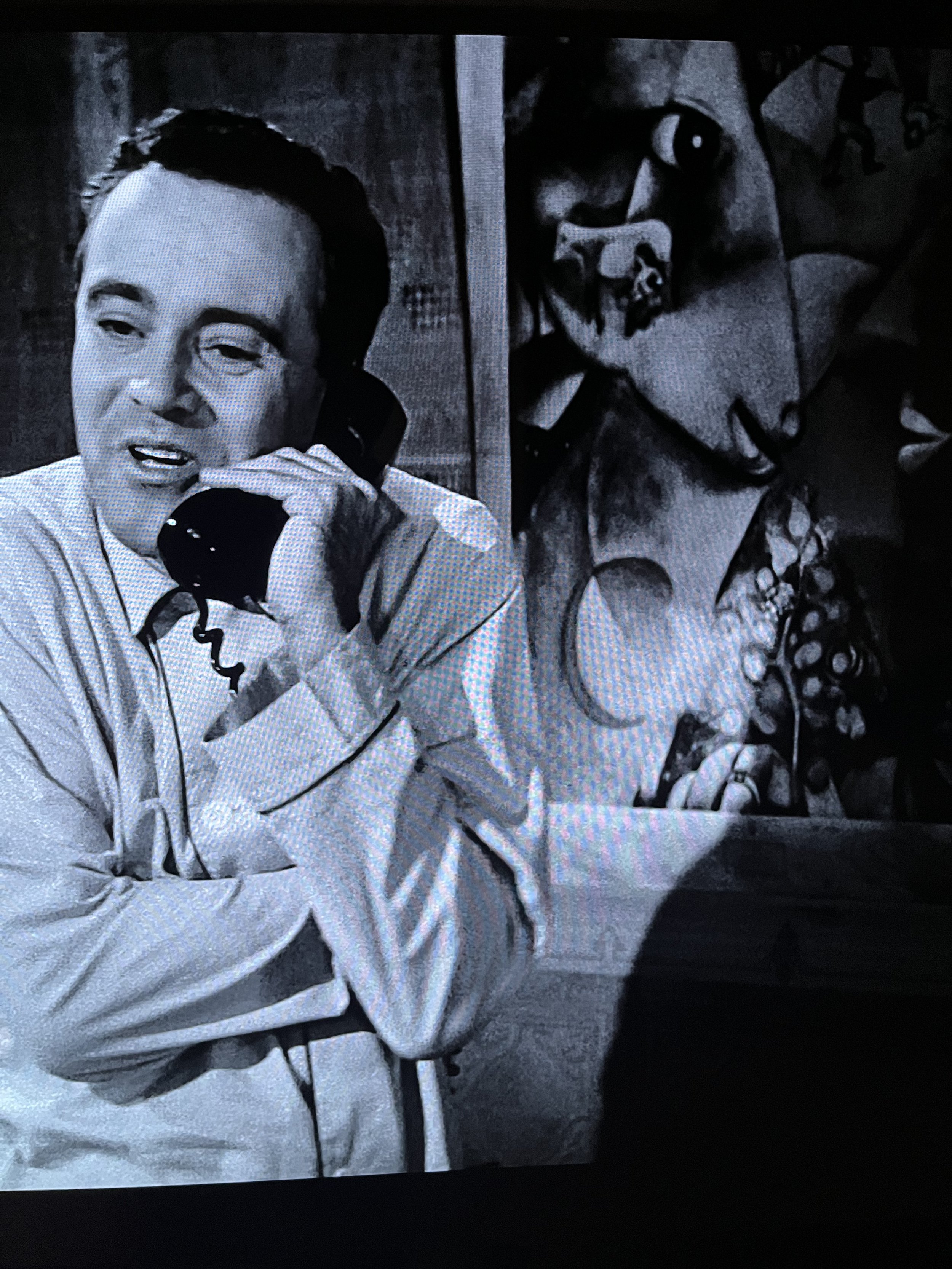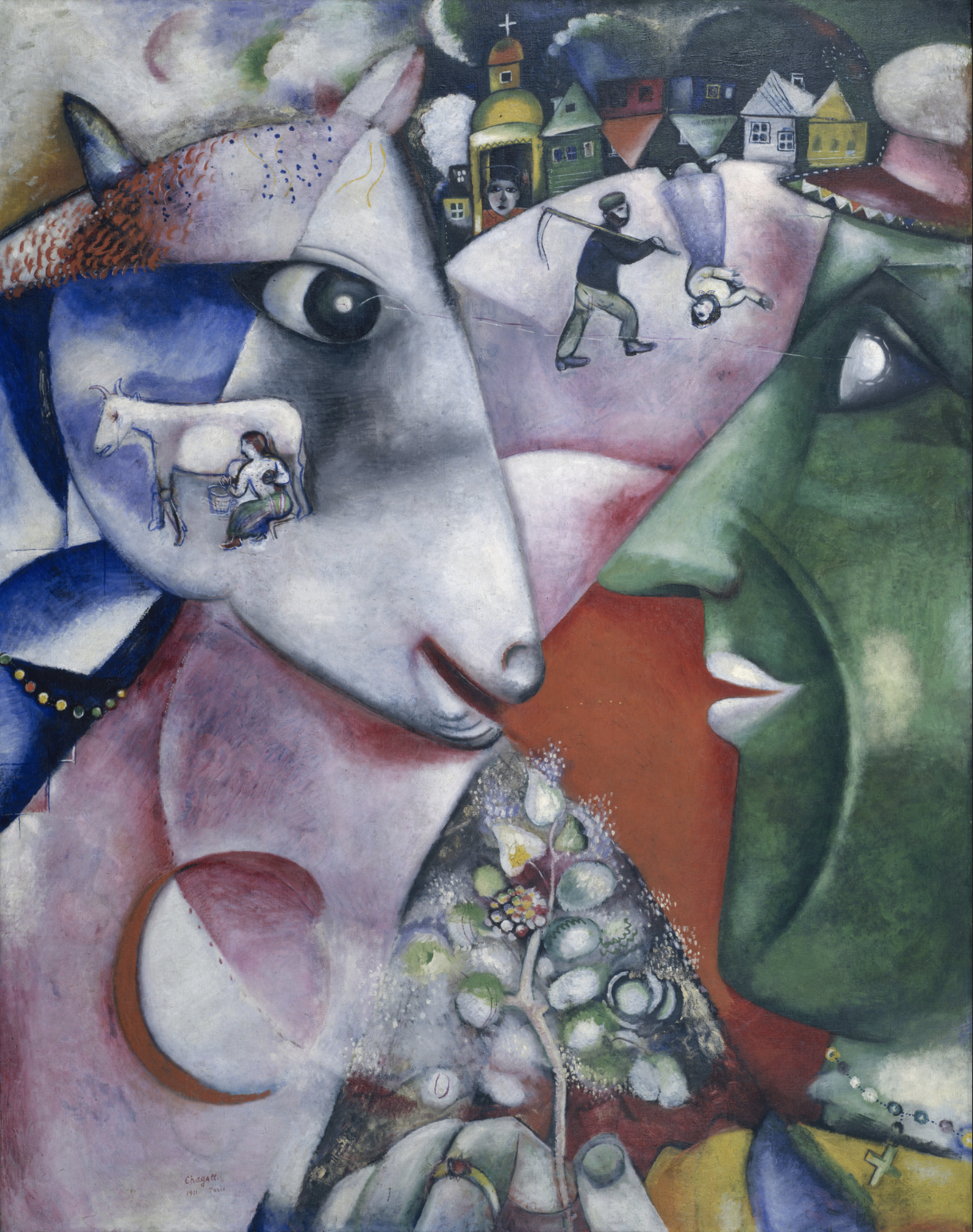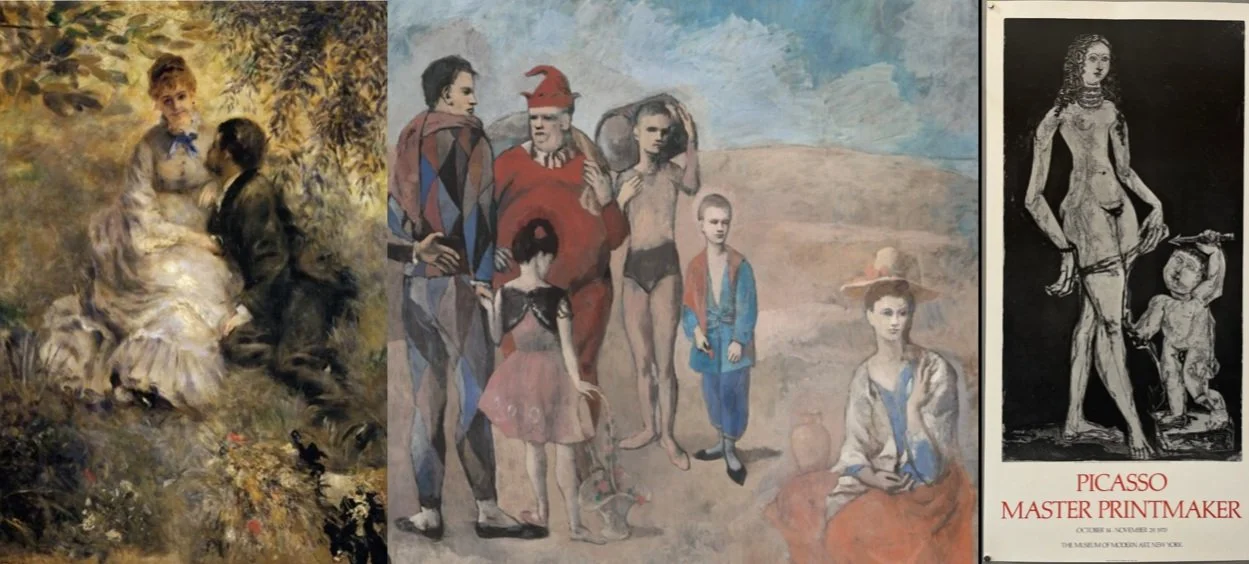Film Essay: The Art in "The Apartment"
Billy Wilder’s 1960 classic “The Apartment” is one of my favorite films. I have seen it countless times and I never tire of it. Jack Lemmon and Shirley MacLaine have such incredible chemistry. Their interactions on screen are filled with wit and drama. The ending line “Shut up and deal” is one of the best in all of cinema. The film is at times tragic, at points completely hilarious and in total a true piece of art.
Speaking of: I’m not sure if you have noticed, but Lemmon’s character Calvin Baxter’s apartment in the film is decorated with a number of posters and framed artworks. I noticed this a few rewatches in and have looked closer and closer at the specific pieces on his walls. The set dresser would then have picked artworks with a purpose. I think that the posters on the wall of Baxter’s apartment relate to the story as a whole, even if they are not entirely clear to the human eye.
All the posters that I have spotted and identified are from the Museum of Modern Art in New York City. Makes sense. Baxter probably went to MOMA and bought the posters in the gift shop. Which works did he pick?
Three Musicians, Pablo Picasso (1921):
This work is situated in the bedroom to the right of the bed, tacked up on the wall. It features a trio of musicians: one playing the clarinet, another a guitar and the third holding sheet music. I love a painting similar to this one at the Philadelphia Museum of Art. It also features a trio of musicians and was painted the same year. So, when I spotted this painting in “The Apartment” I knew immediately it was a Picasso.
My immediate instinct is to connect the painting with the trio of Baxter, Fran Kubelik and Fred MacMurray’s Jeff Sheldrake. They are the central three characters in the story and also a dramatic love triangle. I would say that Kubelik is the monk who is singing with the sheet music, serenaded by Baxter and Sheldrake (who both seek to woo her). Though Kubelik appears to be in a position of power, I would argue that she is still beholden to the sheet music and to her fellow musicians. Just like in the film where she seems incapable of escaping the grip of Sheldrake.
The Sleeping Gypsy, Henri Rousseau (1897) -
One of my all time favorite Rousseau paintings (one of my other favs is this one at the PMA). A dreamy, surreal landscape with a lion and a sleeping figure of a woman. It clearly is meant to evoke the image of Kubelik lying conscious on the bed following an attempted suicide by overdose. In that case, the lion would then be evoking Baxter, watching over and caring for her and she recovers.
I and the Village, Marc Chagall (1911) -
A gorgeous Chagall depicts a human figure on the right making eye contact with a cow on the left. The human figure holds a blossoming plant in their hand. It is located in Baxter’s sitting room above his record playing and vinyl collection. Attempting to relate this painting to “The Apartment”, I would say that the figure on the right is Baxter giving the keys to his apartment to one of his colleagues at work (the cow). The title suggests that the human figure is the center of their village, and Baxter represents that role in his apartment. He oversees the use of it for affairs, whether he wants to or not.
Trafalgar Square, Piet Mondrian (1939-43) -
“The Apartment” begins with the following voiceover line by Baxter:
“On November first, 1959, the population of New York City was 8,042,783. If you laid all these people end to end, figuring an average height of five feet six and a half inches, they would reach from Times Square to the outskirts of Karachi, Pakistan.”
He is talking about the crowded metropolis that is NYC. This painting by Mondrian (though depicting a square in London) also sets out to depict the calculated, pattern-filled world of the city. Mondrian’s vision is devoid of people, instead focusing on straight lines and blocks of color. “The Apartment” focuses on a small portion (perhaps one of the blocks of color) and develops the relationships in just one apartment in the vastness of New York City.
Around the Fish, Paul Klee (1926) -
I love Paul Klee’s work. He is so imaginative and fun. This work in particular is brilliant. It features a fish lying on a platter surrounded by all sorts of fantastical figures, shapes and plants. I think it is pretty easy to assume that the fish represents Baxter, laid out on a platter for all of his colleagues to take advantage of him. For most of the film he is beholden to his superiors in the hopes of getting promotion (and in fear of getting fired if he doesn’t allow them to use his apartment). He is essentially this fish, in a dizzying dark space, unable to move and with no hope of getting out of this never-ending cycle.
The Studio, Pablo Picasso (1927-28) -
This abstract image of two figures in a studio evokes the shot at the end of the film with Baxter and Kubelik playing rummy. The canvases in the background appear almost as blank spots on the wall, similar to the empty rectangles of past artworks as Baxter prepares to move. Also significant is that this room, though abstracted, is the clearest representation of a room in all of these paintings. We see the door, we see a table and table cloth, we see multiple walls and even some perspective. I feel like this painting points to Baxter and Kubelik’s future together. Just the two of them, existing in their own space (and probably playing rummy at the table).
Baxter places this poster right on your left as you enter the apartment. It is only clearly visible a view times during the film.
Unidentifiable Works
There are a few pieces that I don’t recognize or simply cannot identify but I still think it is worth mentioning their presence in the apartment.
One is a framed still life of a pear and an orange. It is on the right wall as you enter through the door. It’s a classic still life with the pear leaning up against the semi-unpeeled orange. I’m tempted to connect these two fruit figures to Baxter and Kubelik with Kubelik (the pear) leaning on Baxter (the orange) for support.
There is a group photograph in Baxter’s bedroom which I think could possibly be a tennis team photograph from high school. At least a sport’s team of some sort. Baxter has a tennis racket so that’s why I assume it is the tennis team.
Also in his bedroom is a collection of four prints, tacked up in a square orientation. I am still trying to identify these works, it is hard to get a clear shot of them as the film plays. I thought initially that they are small works by Klee but the MOMA collection doesn’t have Klee works that resemble these. Will require more research.
Another puzzling work is a sexualized painting of two lovers in the main living space. I attempted to identify this work to no avail. I thought perhaps it could be a Shunga piece from Japan but no works that I researched resembled this one. Regardless, it is interesting that such a sexual image is on the wall of the living space. I think it alludes to the fact that Baxter’s apartment has sexual activity throughout the entire space, though unfortunately for Baxter none of it includes him.
Finally there is a second still life that is confounding me. It appears to be a framed painting (like the pear and orange) with a bowl and more fruit. But I can’t be sure. Could be from the 19th century possibly. It is hard to tell how abstract the objects are, so could also be 20th century.
At the end of this film Baxter’s apartment has been stripped. He is moving. All the artworks that I have discussed are packed up in boxes. When Kubelik comes in and they are playing rummy, we see the blank spaces behind him.
He is starting anew. A blank slate. Very poetic.
























